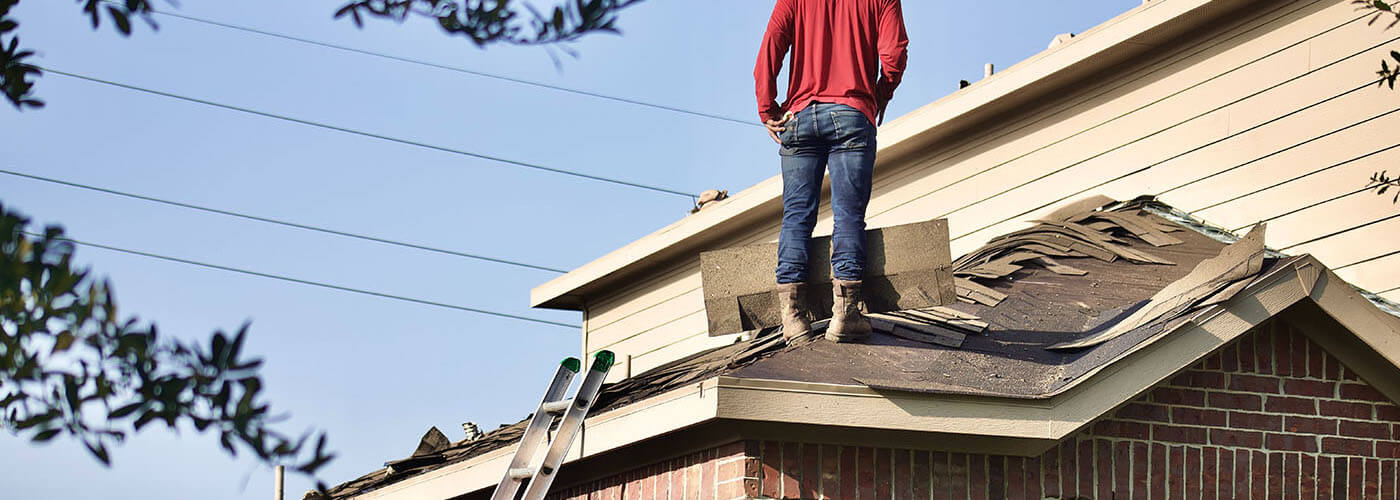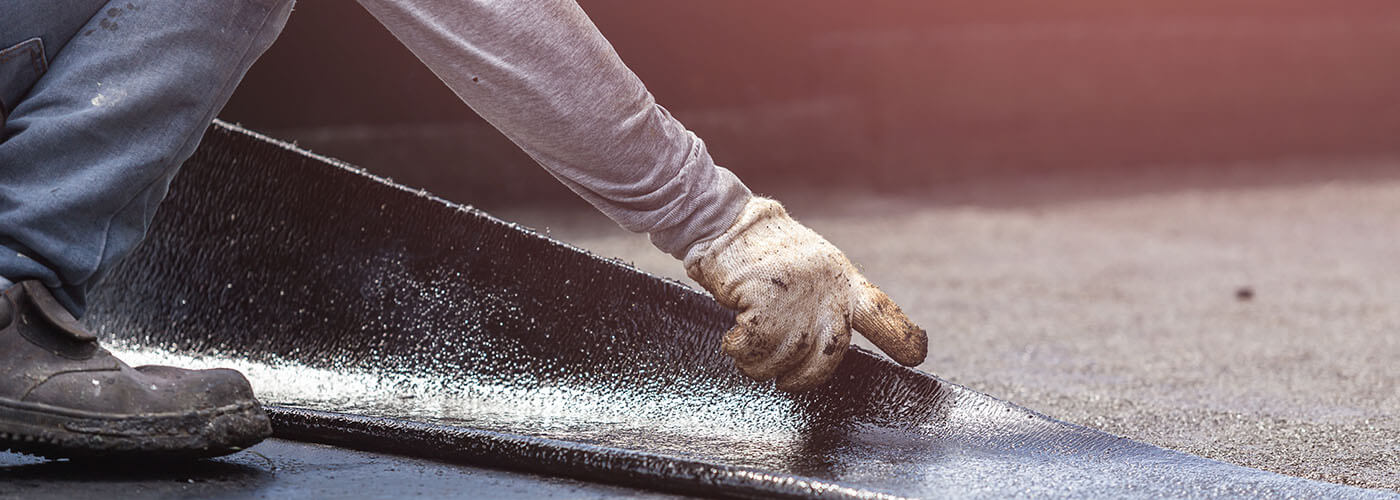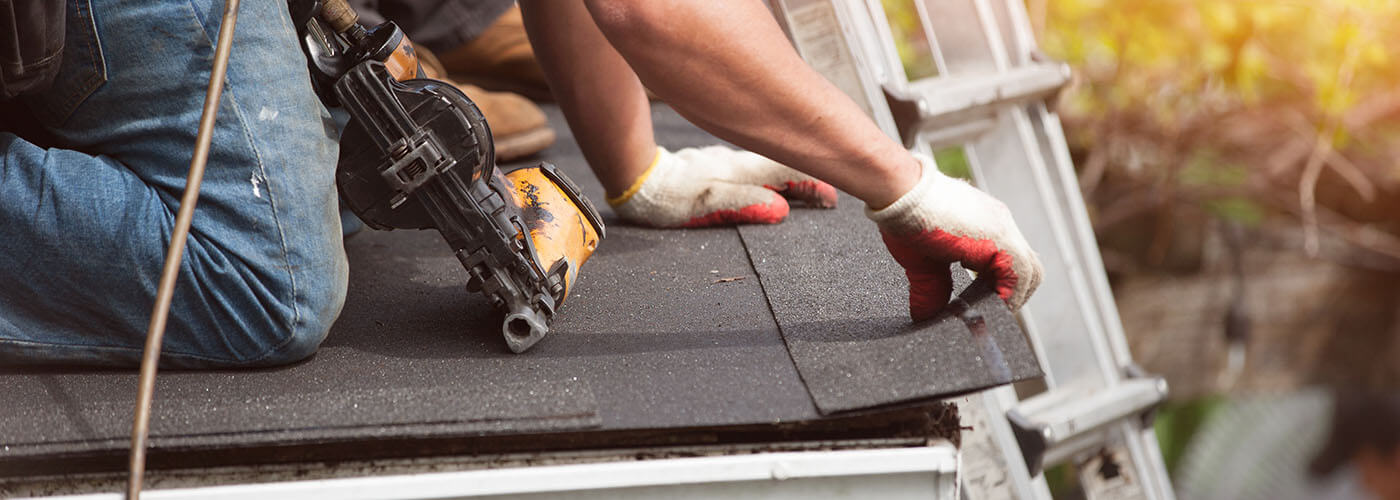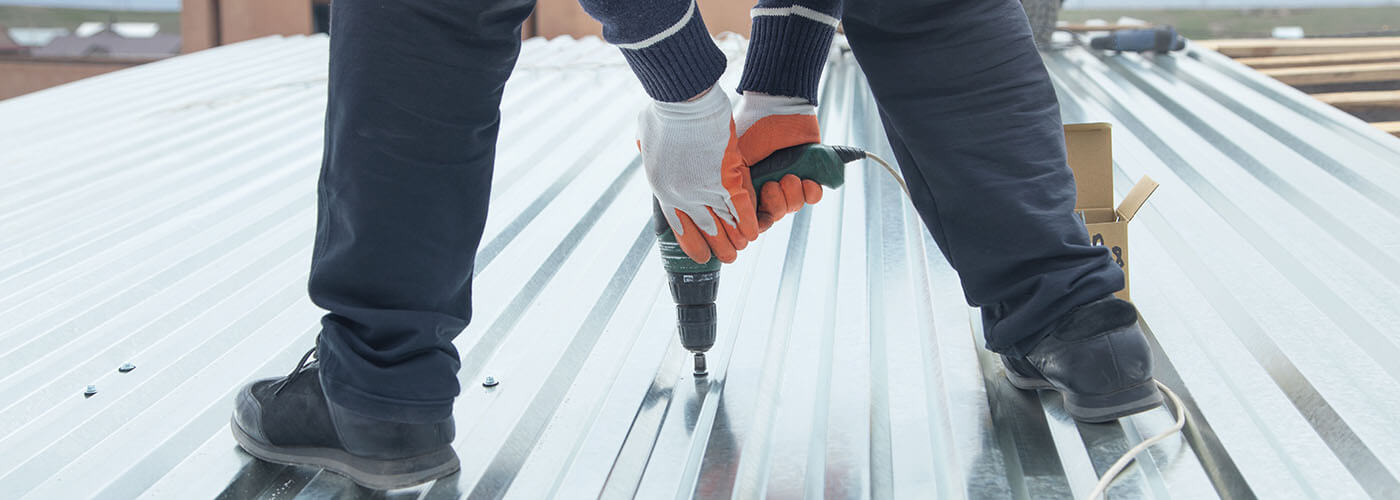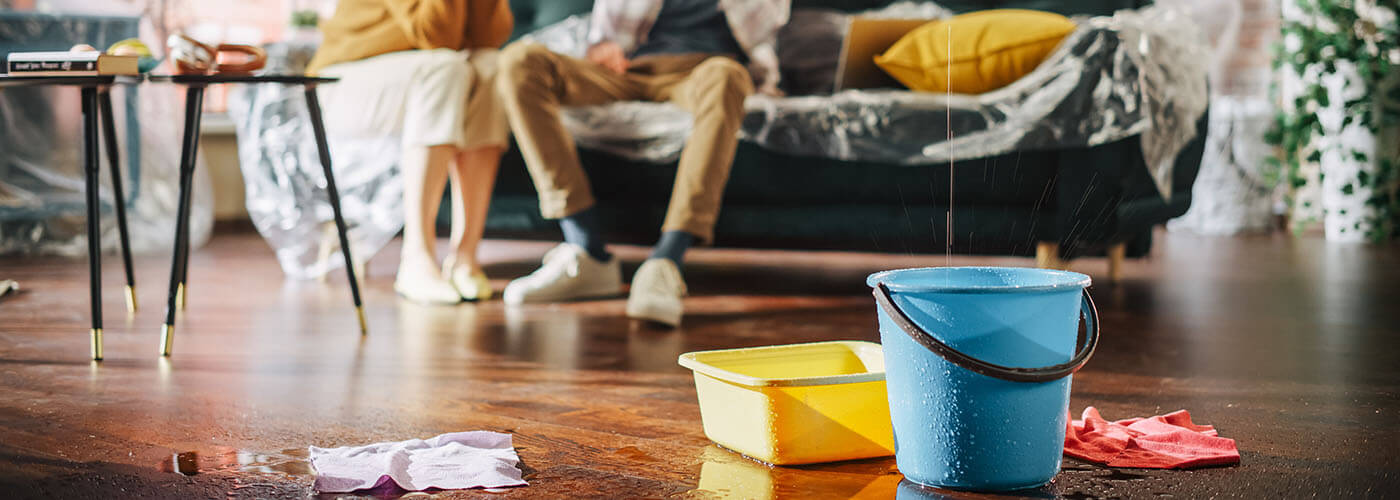Water, wind, snow, sun, and ice — your roof protects you and your family from all of these and more! That’s why keeping your roof in good condition is so crucial. In case of an emergency roof repair or any other roof emergency, such as a leak, it’s vital to get repairs done quickly.
You can save time and money if you know how to repair roof leak issues. However, depending on your level of expertise many repairs may be a band-aid solution, and it’s best to let a professional roofer handle the job to prevent emergency leaks and structural damage to your home.
This ultimate emergency roof repair guide will help you understand what to look for when assessing your roof’s condition, how to identify common signs of damage, and how to prepare for a professional emergency repair.
Assessing the Emergency Roof Damage
During a roof repair emergency, the first thing to do is identify and assess the damage. If you can safely get on the roof and inspect it, pay close attention to any areas of discoloration or exposed underlayment. You should also check for buckling, curling, broken, or missing shingles or shingle granules.
If you can’t get safely on the roof, use binoculars to examine it from ground level. Look around all areas of your home, such as the chimney, gutter, and vents, for any signs of damage. Once you’ve identified the signs of damage, you can determine if you need an emergency roof leak repair.
There are various types of emergency roof damage you may come across, such as:
- Storm damage: Severe wind storms hail, tornadoes, and other extreme weather conditions can cause significant roof damage. Storms tear off shingles, loosen the seals on roofing materials, and can create cracks in the underlying structure of your roof.
- Ice dams: When the snow melts and accumulates on your roof, the ice builds up and eventually forms a dam, preventing water from draining correctly. This causes water to back up and leak into your home, resulting in severe and expensive damage.
- Fire damage: Fire damage can be caused by sparks from a chimney, lightning strikes, extreme heat, or other sources.
- Tree fall: When a tree or large branch falls onto your roof, it can cause significant damage. In some cases, the roof may even need to be replaced entirely.
- High winds: High winds can easily tear off shingles and loosen material on your roof. Loose or displaced material can leave your roof exposed to the elements and vulnerable to leaks, rot, and other damage.
- Structural collapse: Structural collapse is usually caused by bad weather, water damage, extreme condensation, and inadequate ventilation. It can be catastrophic if left unaddressed.
Urgent situations like these require professional emergency roof repair services to repair the damage and restore the structural integrity of your home.
Additionally, some situations can be identified and fixed without a roofing expert. These damages are minor enough to be fixed with a few tools and materials.
- Roof neglect: Neglecting your roof can cause severe damage to your home, allowing minor issues to become major problems over time.
- Hail damage: Hail can cause minor dents or cracks on your roof’s shingles. An insurance agent usually needs to inspect the damage before repair can begin.
- Missing or broken shingles: A few missing or broken shingles are often simple and inexpensive to fix.
- Minor roof leaks: Minor roof leak emergency repair can often be done with a few tools.
- Clogged gutters: These can be quickly cleared with essential tools.
- Mold growth: Mold, mildew, and algae growth on your roof often means a moisture problem needs to be addressed.
- Animals and pests: Animals and pests can cause damage to your roof by tunneling or making nests.
While these situations are usually not a significant cause for concern, they can lead to more severe issues if left unchecked. Once you’ve identified the type of damage, you can decide whether to call a professional or handle the repair yourself.
Steps for Emergency Roof Repair
There are specific steps you should take to prepare for emergency roof repair, including:
- Assessing the damage: Survey the damage, identify any areas needing immediate attention, and document the damage with pictures or videos.
- Calling your insurance company: Contact your insurance company and ensure you have the proper coverage for emergency roof repair. You should file a claim with your insurance company and not your insurance agent. Insurance agents often try to dissuade you from filing a claim when you should.
If you can handle the repair yourself:
- Check for structural integrity: Ensure the underlying structure remains intact by inspecting your attic.
- Secure the area: Ensure all surrounding areas are safe and secure before beginning any repairs.
- Wear proper gear: Make sure that you’re wearing sturdy work boots, gloves, and goggles when working on the roof.
- Prepare your tools and materials: Have the tools and materials ready for the repair before beginning, like a ladder, hammer, nails, shingles, and more.
- Repair or replace damaged materials: Depending on the extent of damage, you may need to perform an emergency roof patch or replace damaged materials.
- Follow safety guidelines: Follow all safety protocols and use caution when working on the roof.
If the roof damage is severe:
- Choose a reliable contractor: Find a licensed and certified professional with experience in emergency roof repair.
- Prepare your home: Prepare for any necessary repairs by removing furniture or other items from the area, tarping off any damaged areas with plastic sheeting, etc.
Tips for Temporary Emergency Roof Repair
While waiting for professional assistance, you can do these temporary repairs to prevent further damage:
- Cover any holes or cracks with a tarp or plastic sheeting to prevent further water damage
- Inspect flashing and sealant areas, and fix tears, rips, or punctures
- Check the roof for loose shingles and nail them down securely
- Clean out clogged gutters to stop water buildup
- Clear away debris, leaves, and twigs to prevent pests from nesting on the roof
- Check attic insulation for water damage
- Check for any weak spots around chimneys or vents
- Perform emergency ceiling leak repair to prevent water from seeping into your home
When it comes to temporary emergency roof repair, use proper materials, such as tarps, plastic sheeting, roofing cement, flashing tape, and more, to ensure the repair is secure. Be sure to use the proper tools and techniques to prevent further damage. Additionally, wear safety equipment and follow protocols to avoid injury.
Temporary repairs may help protect your home until a professional can arrive and perform permanent repairs.
Contacting Professional Emergency Roof Repair Services
Don’t hesitate to call a professional if you need roofing emergency repairs. A good roofing company will provide emergency services, whether it’s a minor repair or a primary replacement. Hiring a professional for emergency roof repair ensures the job is done correctly and safely.
They have the skills, experience, and tools to do the job quickly and efficiently. Professionals also use industry-standard materials and techniques to ensure lasting results. Some companies also offer 24-hour emergency roof repair services, which can be helpful if the damage is extensive and happens outside of business hours.
When selecting a roofing company for emergency repair, ensure they are certified and licensed. Ask friends or family for recommendations and research online reviews to find the best contractor for you.
Preventive Measures for Emergency Roof Repair
To prevent emergency roof repair, homeowners should take the following steps:
- Inspect your roof regularly: An annual inspection can help identify potential problems before they become an emergency.
- Check for weather damage: After storms, check your roof for any signs of damage.
- Clean gutters regularly: Clogged drains can cause water to pool, leading to emergency repairs.
- Check for signs of aging: Seek worn-out or curling shingles, moss growth, rusting flashing, and other signs of aging.
- Trim overhanging tree branches: Tree limbs can cause damage to the roof, so make sure to trim them regularly.
- Repair any damage immediately: Small repairs can prevent more extensive, costly issues later.
In Conclusion
Emergency roof repair is an unexpected expense that nobody wants to deal with. By performing regular inspections, cleaning your gutters, and addressing any minor repairs promptly, you can help prevent emergency roof leak repair from becoming a necessity.
Knowing how to assess and perform temporary emergency roof repair can help avoid a high emergency roof repair cost and protect your home from further damage. Still, calling an expert roofer contractor, like Master Roofing, is the best way to ensure the repair is done correctly and safely.
At Master Roofing, we can help you assess the extent of the damage, explain your options, and provide a lasting solution to your roofing emergency. We also offer 24-hour roof repair services in the event of an emergency. We provide Salt Lake and Utah County homeowners peace of mind every time.
Contact us today for a free quote.
Frequently Asked Questions
Is a leaking roof an emergency?
If a leaking roof is causing significant damage, it can be considered an emergency. It’s critical to address the issue promptly, as untreated leaks can cause costly structural damage and severe health hazards. It’s best to contact a professional for emergency roof repair immediately.
What is a roof emergency?
A roof emergency presents an immediate danger to you and your family and requires immediate action to prevent further damage. This can include a leaking roof, fallen tree limbs, weather damage, or other urgent issues.
How can I temporarily fix a hole in my roof?
If you’re in a pinch and need emergency roof repair, you can use a tarp or plastic sheeting to cover the damaged area. Make sure it’s securely fastened with nails or adhesive tape. Even if you can temporarily fix the roof, have an expert assess the damage and provide a long-term solution as soon as possible.
How do you apply an emergency roof patch?
Before applying an emergency roof patch, ensure the area is clear of debris and dirt. Then, use a cold-patch material on the damaged site and smooth it out with a trowel or putty knife. Press firmly and remove any excess material.


